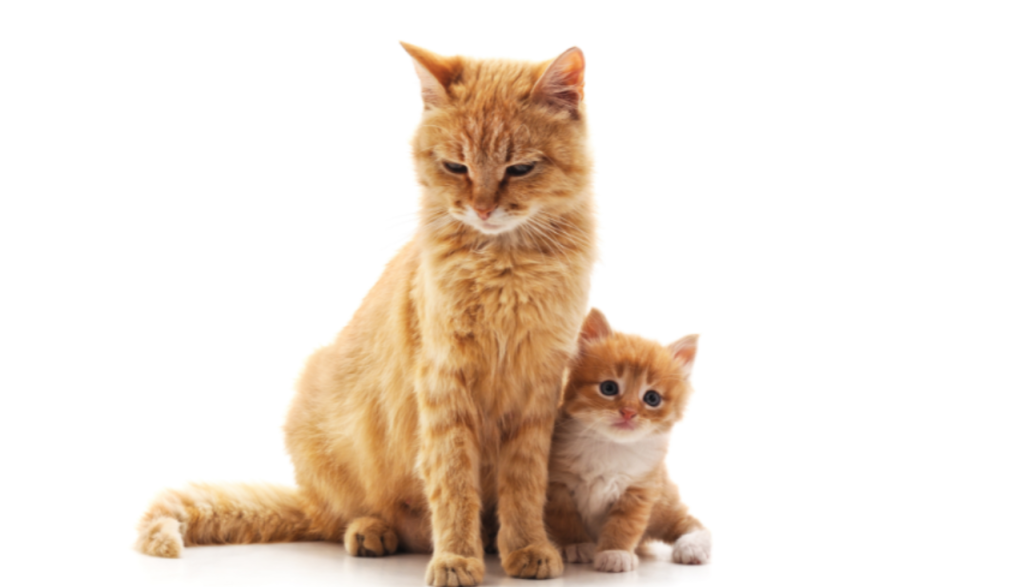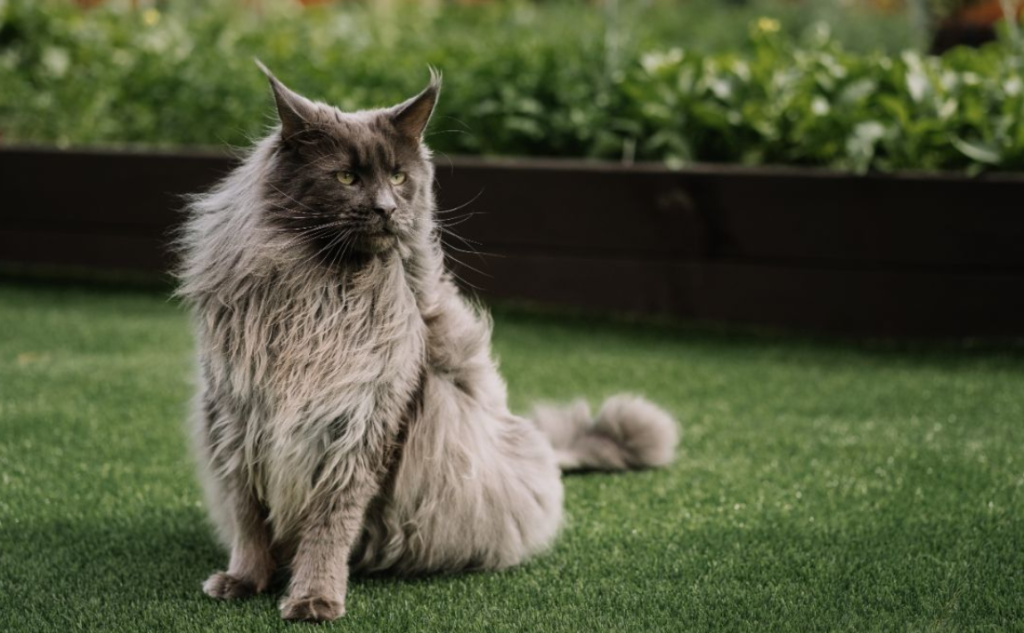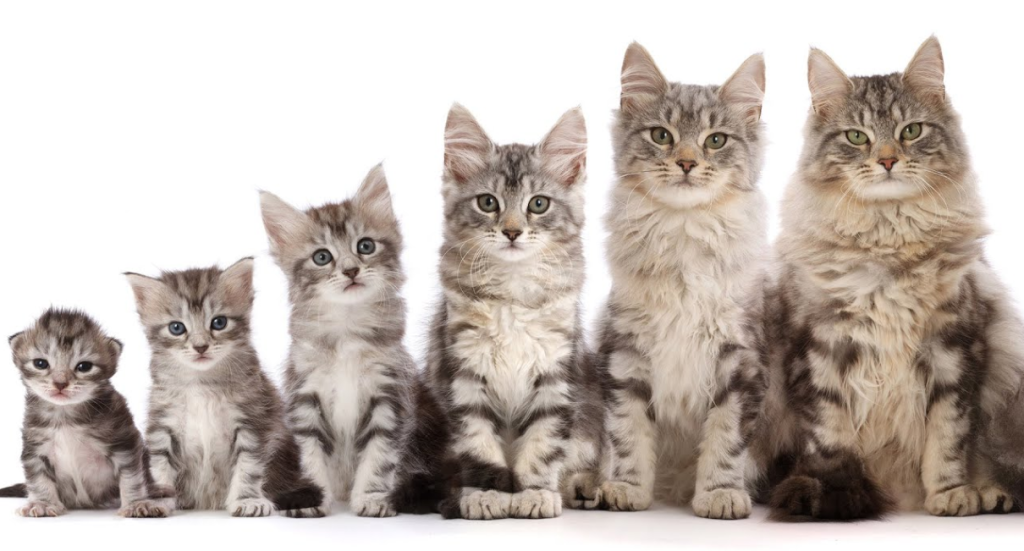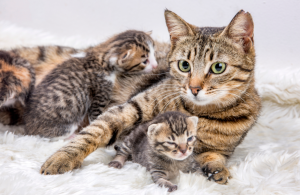As a fellow cat owner named Lucas, I know one of the most common questions we all have is when do cats stop growing? I also had this question when I first adopted my adorable tabby cat Shadow as a tiny kitten. Seeing how rapidly kittens grow during their first year, it left me wondering – when do they finally reach their full adult size?
To find the answer, I did extensive research on cat growth timelines. What I learned is that there isn’t one simple answer, as many factors influence when a cat will stop getting bigger. In this guide, I will walk you through everything I discovered about the feline growth process. Whether you just brought home a new kitten or are curious about your adult cat’s size, this article will tell you everything you need to know about when cats stop growing.
Here’s a quick overview of what I’ll cover:
- The key growth phases of kittens and cats
- Factors that influence when cats reach their full size
- Typical growth timelines for domestic cats
- How to monitor your kitten’s development
- What to expect as your cat nears its full adult size
- Differences between cat breeds
- Why some cats end up smaller or larger than expected
- FAQs on feline growth patterns
Let’s start with an overview of the key phases of development that control when cats stop growing.
The 4 Main Growth Phases for Kittens and Cats

Cat growth occurs in a series of stages influenced by age, breed, genetics, nutrition and health. Here are the key developmental phases:
1. Birth to 6 Weeks: The Kitten Phase
For the first month and a half of life, kittens are completely dependent on their mother’s milk for nutrition and antibodies. They will triple in weight during this phase. Their eyes open at around 1 week old, and they start crawling at 3 weeks and walking at 4 weeks.
2. 6 Weeks to 6 Months: The Junior Phase
This is the most rapid stage of growth. Kittens will be weaned from their mother’s milk and start eating solid food. They gain up to a pound per month during this phase. Kittens lose their baby teeth and get their permanent teeth from 3-6 months old.
3. 6 Months to 1 Year: The Adolescent Phase
Growth begins slowing down but kittens will still gain weight and muscle mass while their frame fills out. They reach sexual maturity between 6-12 months. Female cats can get pregnant as early as 4 months old.
4. 1 to 4 Years: The Adult Phase
At around one year old, domestic cats reach their adult size. But some larger cat breeds continue growing into their third year. As adults, cats primarily maintain their size and weight if properly fed and exercised. However, many will start gaining weight after being spayed/neutered due to hormonal changes. Weight gain is also common as cats naturally become less active through adulthood.
Now that you understand the main phases of feline growth, let’s go over the key factors that influence when cats stop growing.
4 Key Factors That Affect When Cats Reach Their Full Size

While the growth timeline provides averages, several variables impact exactly when an individual cat will reach its maximum size:
1. Breed
Some cat breeds, such as Maine Coons and Ragdolls, keep growing into their third year and don’t reach full maturity until age 4. The largest domestic cat breed, Maine Coons, can take up to 4 years to reach their full adult size.
Smaller breeds like Siamese and Abyssinians typically stop growing by 1 year old.
So breed is the #1 determinant of when your cat will stop getting bigger.
2. Gender
Gender also plays a role. Tomcats (males) tend to be larger than females of the same breed. On average, males grow for a longer duration than females and reach their full size later.
Males also can keep developing muscle mass and broadening until age 3, whereas females typically reach their peak musculature by age 2.
3. Nutrition
Proper nutrition is crucial during all stages of growth. Kittens need high levels of protein, calories and nutrients to support their rapid development.
Malnutrition can lead to stunted growth. Overfeeding can cause excessive weight gain and obesity. An optimal diet will allow cats to reach their genetically predisposed size.
4. Spay/Neuter Status
Kittens that are spayed or neutered before 6 months old tend to be slightly smaller than unfixed cats.
Early spay/neuter prevents the sex hormones that boost late-stage growth from being produced. But the size difference is minimal, usually only 1-2 pounds smaller on average.
Now that we’ve covered the major factors that influence cat growth, let’s look at the typical timeline and weights for domestic cats.
Average Growth Timeline for Domestic Cats
While every cat is different, this chart summarizes the general weight and growth milestones for properly fed domestic cats:
Birth Weight: 3 – 5 oz
6 Weeks: 2 lbs
3 Months: 3 lbs
6 Months: 6-8 lbs
9 Months: 7-10 lbs
1 Year: Full adult size reached (averages 8-12 lbs)
18 Months: Main Coon cats may reach 14-16 lbs
4 Years: Largest breeds like Maine Coons finish growing (up to 25 lbs)
So most domestic cats will stop growing in height and length around 9-12 months and finish filling out by 1 year old.
Some key signs your cat is nearing its full adult size:
- Growth slows down after 9 months
- Ribs no longer visible or easily felt
- Belly hangs down and jiggles slightly when walking
- Neck appears thick and well-muscled
- Chest is broad and torso is barrel-shaped
For a visual guide, see the chart below summarizing feline growth stages:
[Insert infographic showing kitten/cat growth timeline and photos of cats at each age]
While this timeline provides general averages, each cat develops at its own pace. Next, let’s go over how to monitor your kitten’s growth.
Monitoring Your Kitten’s Growth

To ensure your kitten is healthy and on track developmentally, regular checkups and weight tracking are key. Here are some tips:
- Weigh kittens weekly or bi-weekly in the rapid growth stages before 6 months old.
- Use a pet scale at home or weigh at your vet.
- Track weights on a chart over time to monitor the growth curve.
- Kittens should gain around 1 pound per month from 2 – 7 months old.
- Healthy kittens will have energy and bright, clear eyes.
- Feel kittens’ tummies – they should not be bloated or distended.
- Make sure kittens are eating high protein, nutrient-rich food for development.
- Watch for hitting growth milestones like teeth coming in and ear standing up.
- Have your vet examine kittens during regular wellness checkups to ensure healthy growth.
- Spay or neuter kittens by 6 months old for health and behavior benefits.
Monitoring your kitten closely through each life stage allows you to ensure they are maturing normally. Now let’s look at what to expect as felines get closer to their maximum size.
What to Expect as Cats Approach Their Full-Size
As your kitten enters the 9-12 month range, their growth will really start to taper off. Here’s what you can expect:
- Slower weight gain each month
- Longer limbs but musculature still developing
- Belly expands and jiggles more when walking
- Ears reach full height and size
- Chest and neck become more broad
- Full coat thickness and length achieved
- Weight stabilizes near adult target
Large cat breeds will continue gaining height and muscle mass past one year old. But most cats will look nearly full grown by a year.
Below their final size, you may notice:
- Weight levels off
- No significant height growth
- Muscles are well-defined and chest is barrel-shaped
- Males’ cheeks and neck become very broad
- Females have rounded, firmly muscled hindquarters
- Stomach hangs low and jiggles when running or jumping
So if your year-old cat looks big, stocky and well-muscled, chances are they have achieved their adult dimensions!
Typical Size Differences Between Cat Breeds
While purebred cats vary in maturation patterns, below are some general adult size ranges for popular breeds:
- Maine Coon: 15-25 lbs (males larger)
- Ragdoll: 12-20 lbs (males larger)
- Siamese: 6-12 lbs
- Bengal: 10-15 lbs
- Abyssinian: 8-12 lbs
- Persian: 7-12 lbs
- Sphynx: 6-12 lbs
- British Shorthair: 9-15 lbs
- Norwegian Forest Cat: 12-16 lbs (males larger)
- Average Domestic Cat: 8-12 lbs
So monitor your cat’s breed along with their individual growth signals to predict their final size.
Next let’s look at why some cats end up smaller or larger than expected.
Why Some Cats Are Much Smaller or Larger Than Average
While genetics and breed influence size, several other factors can cause cats to fall outside the average adult size range:
Reasons A Cat May Be Smaller:
- Malnutrition or underfeeding in kittenhood
- Underlying health condition slowing growth
- Parasites limiting nutrient absorption
- Birth defects impacting development
- Spay/neuter before 6 months old
- Dwarfism or other genetic mutation
- Petite breed mix like Siamese or Abyssinian
Reasons A Cat May Be Larger:
- Overfeeding leading to obesity
- Genetic predisposition for large size
- Underlying condition causing excess growth like thyroid disorder
- Breed with later maturation like Maine Coon
- Male cat (tends to be larger than females)
- Lack of spay/neuter resulting in more testosterone
- Mixed breed with larger parent (like Maine Coon mix)
So while genetics determine a baseline size range, other internal and external factors can shift a cat’s size in either direction.
Now let’s answer some common questions about cat growth patterns.
Frequently Asked Questions
Here are answers to some of the top questions cat owners have about when cats stop growing:
How much bigger will my kitten get?
The average kitten triples in size between birth and 6 months old. Beyond that age, they add 1-3 more pounds by their first birthday. Larger breeds gain 3-4 more pounds between ages 1 and 2.
At what age is a cat fully grown?
Most domestic cats reach their adult size between 10-14 months old. Purebred large cats like Maine Coons can take up to 4 years to finish growing. Check your cat’s breed standards for exact ages.
Is it bad if my cat is still growing after 1 year?
No, it’s perfectly normal for larger purebreds like Maine Coons to keep growing past a year. Even many mixed breed cats fill out more up to 18 months. But if unsure, have your vet examine your adult cat.
My 1-year-old cat seems small – will she still get bigger?
By one year, almost all female cats are fully grown. If your full-grown cat is petite, it is likely due to breed, genetics, or early spaying. As long as she is healthy, her small size is not a concern.
Is it normal for cats to gain weight after being spayed/neutered?
Yes, the reduction in sex hormones often slows metabolism so cats burn fewer calories. Sticking to a healthy diet and activity levels prevents excessive weight gain.
I hope this guide gave you a detailed overview of cat growth patterns and when cats stop growing! Let me know if you have any other questions.
I’m Lucas and I’ve shared my learnings as a fellow cat owner on when kittens turn into cats. I hope this guide gave you insight into what to expect as your feline friend matures. Let me know if you have any other cat growth questions!

